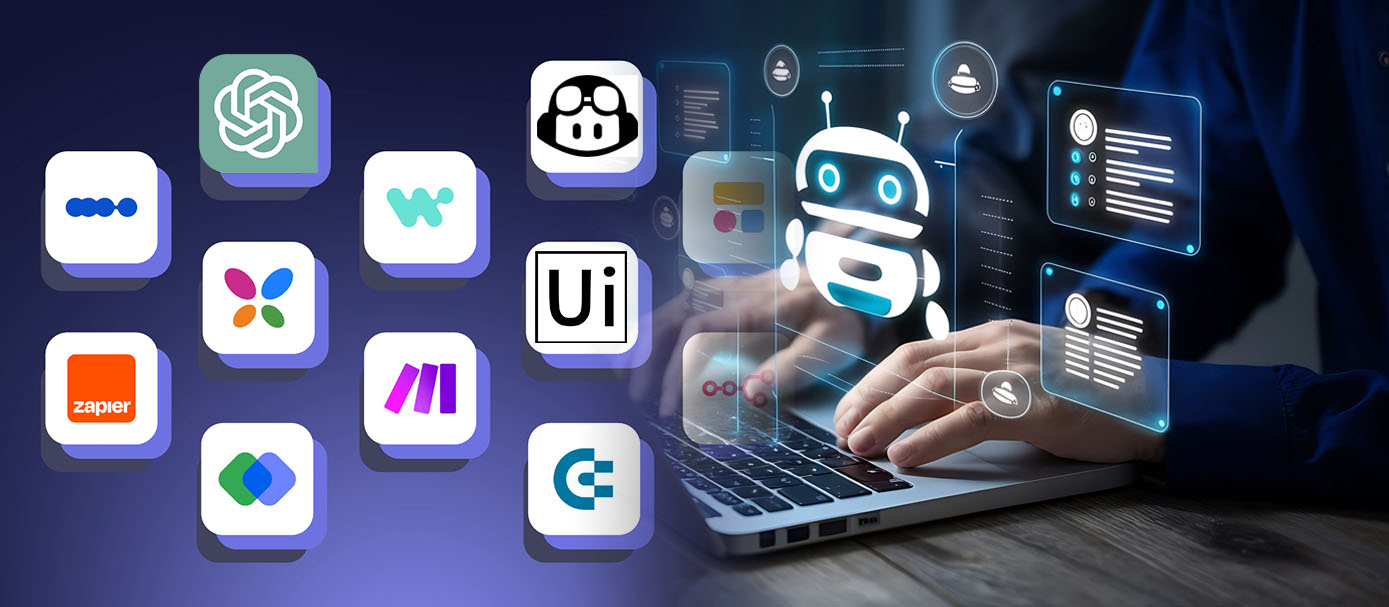Build a Django Discussion Forum: Step-by-Step Tutorial
Learn how to build a complete Django discussion forum with anonymous posting, user interactions, and...
Get instant access to the latest tech news, reviews, and programming tutorials on your device!
🔍 Search Latest International Tech News, Reviews & Programming Tutorials
Learn how to build a complete Django discussion forum with anonymous posting, user interactions, and...
These AI tools offer a range of functionalities to enhance the creative process for vloggers....
NASA astronaut Sunita Williams is returning to Earth with SpaceX’s Crew Dragon, utilizing advanced splashdown...

Discover the 7 game-changing AI automation tools transforming industries in 2025. See which jobs are at risk and how to stay ahead of the curve.
The AI revolution isn't coming—it's already here. In 2025, artificial intelligence has moved beyond chatbots and recommendation engines to fundamentally reshape how we work. From customer service to creative design, AI automation tools are replacing traditional human roles at an unprecedented pace.
Whether you're worried about job security or looking to leverage these tools for your business, understanding this shift is crucial. Let's dive into the seven most disruptive AI automation tools that are changing the employment landscape right now.
What It Replaces: Content writers, copywriters, basic journalists, social media managers
OpenAI's ChatGPT-4 and similar large language models have evolved far beyond simple text generation. These tools now produce publication-ready articles, marketing copy, and social media content that's often indistinguishable from human-written material.
Key Capabilities:
Industry Impact: Marketing agencies report 60-70% reduction in content creation time, while many freelance writers are pivoting to AI prompt engineering roles.
What It Replaces: Junior developers, QA testers, basic software engineers
AI coding assistants have moved beyond simple autocomplete. GitHub Copilot now writes entire functions, debugs complex code, and even architects software solutions with minimal human input.
Key Capabilities:
Industry Impact: Tech companies report 40% faster development cycles, but entry-level programming positions are becoming increasingly scarce.
What It Replaces: Data entry clerks, bookkeepers, administrative assistants, customer service representatives
Robotic Process Automation (RPA) has matured into intelligent automation that can handle complex business processes without human intervention.
Key Capabilities:
Industry Impact: Fortune 500 companies have automated 30-50% of their back-office operations, leading to significant workforce reductions in administrative roles.
What It Replaces: Graphic designers, illustrators, stock photographers, basic video editors
AI image generation has reached professional quality, creating artwork, marketing materials, and visual content that rivals human creativity.
Key Capabilities:
Industry Impact: Marketing departments are reducing external creative agency spending by 40-60%, while stock photography companies face existential challenges.
What It Replaces: Sales development representatives, lead qualification specialists, basic sales analysts
AI-powered CRM systems now handle the entire sales pipeline from lead generation to deal closing, with minimal human oversight required.
Key Capabilities:
Industry Impact: B2B companies report 3x improvement in lead conversion rates while reducing sales team sizes by 25-40%.
What It Replaces: Radiologists, pathologists, medical researchers, diagnostic technicians
AI diagnostic tools now outperform human doctors in accuracy for specific medical conditions, particularly in imaging and pattern recognition.
Key Capabilities:
Industry Impact: Hospitals are implementing AI diagnostic tools that reduce diagnostic errors by 50% while processing cases 10x faster than human specialists.
What It Replaces: Truck drivers, delivery drivers, taxi drivers, logistics coordinators
Autonomous vehicle technology has reached the point where self-driving cars and trucks are beginning commercial deployment across the United States.
Key Capabilities:
Industry Impact: The trucking industry employs 3.5 million drivers in the US, making this one of the largest potential job displacements in modern history.
These AI automation tools aren't just changing how work gets done—they're fundamentally altering the economic equation. Companies implementing these solutions report:
While these changes seem daunting, history shows that technological revolutions create new opportunities even as they eliminate old ones. Here's how to stay relevant:
Upskill in AI Management
Embrace Human-Centric Roles
Become an AI Collaborator
The AI automation revolution is accelerating, and 2025 marks a tipping point where these tools are moving from experimental to essential. Companies that don't adopt these technologies will struggle to compete, while workers who don't adapt risk being left behind.
The key isn't to fear this change but to understand and prepare for it. The jobs of tomorrow will require working alongside AI, not competing against it. The question isn't whether AI will change your industry—it's how quickly you'll adapt to that change.
What's your plan for staying relevant in an AI-automated world?
Stay ahead of the AI curve. Subscribe to our newsletter for weekly updates on the latest automation tools and strategies that are reshaping the American workforce.
Comments & Discussion